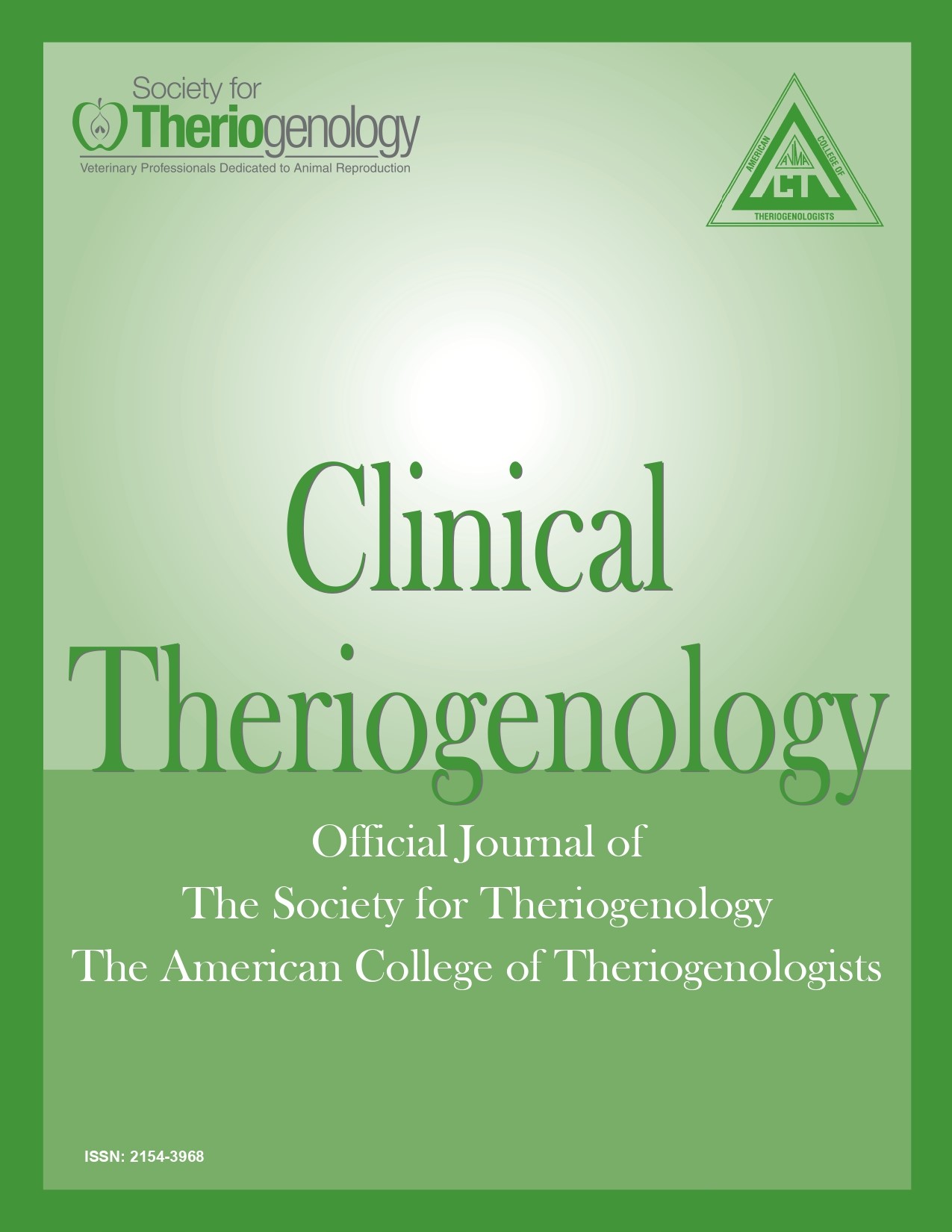The Effect Of Early Postpartum Intervention On The Reproductive Performance Of Anovulatory Anestrus New Zealand Dairy Cows
Abstract
The objective of the current study was to determine the reproductive performance of anovulatory anestrus (AA) cows treated with a routine protocol at 14 to 35 d postpartum (pp). A prospective cohort study was performed over two seasons involving 9,630 cows in 24 herds. Cows not showing signs of estrus and without a corpus luteum (CL) identified on transrectal ultrasound were classified as AA (n=507). In the first season all cows were treated with an intravaginal progesterone device (Cue Mate 1.56 g w/w progesterone [P4]). The device was removed six days later and equine chorionic gonadotropin (eCG; 400 IU) administered IM. Two days later, gonadotropin releasing hormone (GnRH; 100 ug) was administered IM and fixed-time AI (FTAI) performed 16 to 20 h later. In the first season, all cows determined to be AA were allocated to the treatment group. In the second season, cows were randomly assigned to the treatment group or untreated control group. Multivariable logistic regression analysis was used to determine the effect of treatment, cow age, parity, days pp, uterine horn diameter, ovarian diameter, ovarian follicle diameter, Metricheck™ score and body condition score on reproductive performance. Treatment of AA cows was associated with significant reductions in both the interval from presentation date to conception date and the interval from individual calving date to conception date by an average of 7 d. Additionally, pregnancy rate to FTAI was improved in treated cows when compared to control cows (25% (95CI: 21-29%) vs. 14% (95CI: 9-19%) respectively; P = 0.01).
Downloads
Authors retain copyright of their work, with first publication rights granted to Clinical Theriogenology. Read more about copyright and licensing here.





